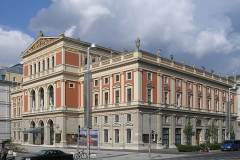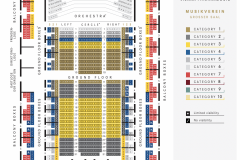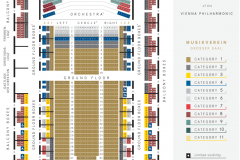Paul Ji, Piano
August 2025 | ||||||
|---|---|---|---|---|---|---|
Mo | Tu | We | Th | Fr | Sa | Su |
About the Pianist Paul Ji is a talented young pianist and the winner of France Télévisions' “Prodiges” talent show in 2019, where he received his award from Lang Lang. A Young Steinway Artist, Paul released his debut album “Piano” with Warner Classics at 16, with a second album planned for release in November 2025. He has collaborated with renowned artists such as Sarah Brightman and gained extensive media coverage, including features by BBC, Le Figaro, and CCTV, which produced three documentaries on him. Paul has performed at prestigious venues like Carnegie Hall, Berlin Philharmonie, and Théâtre des Champs-Élysées. A graduate of Eton College, he is currently studying Philosophy and Music at Yale University and earned an Artist Diploma from École Normale de Musique de Paris under Jean-Bernard Pommier. His performances have been praised for their technical mastery and maturity, with British pianist John Lill describing him as “astonishing” and deeply musical.
Program and cast
Performers:
Paul Ji, Piano
Program
Wolfgang Amadeus Mozart:
Piano Sonata in D major, KV 576
Ludwig van Beethoven:
Piano Sonata in E-flat major, op. 27/1, "Sonata quasi una Fantasia"
Franz Schubert:
Impromptu for Piano in G-flat major, D 899/3
Johannes Brahms:
Intermezzo for Piano in A major, op. 118/2
– Intermission –
Gabriel Fauré:
Après un Rêve, op. 7/1
Special Guest Performer: Ayako Miyauchi
Frédéric Chopin:
Nocturne for Piano, op. 27
Scherzo for Piano in C-sharp minor, op. 39
Étude for Piano in E major, op. 10/3
Waltz for Piano in A-flat major, op. 42
Mazurka for Piano in B minor, op. 33/4
Polonaise for Piano in A-flat major, op. 61, "Polonaise-Fantaisie"
Ends at approximately 10:00 PM
Musikverein Golden Hall
This building is located on Dumbastraße/Bösendorferstraße behind the Hotel Imperial near the Ringstraße boulevard and the Wien River, between Bösendorferstraße and Karlsplatz. However, since Bösendorferstraße is a relatively small street, the building is better known as being between Karlsplatz and Kärntner Ring (part of Ringstraße loop). It was erected as the new concert hall run by the Gesellschaft der Musikfreunde, on a piece of land provided by Emperor Franz Joseph I of Austria in 1863. The plans were designed by Danish architect Theophil Hansen in the Neoclassical style of an ancient Greek temple, including a concert hall as well as a smaller chamber music hall. The building was inaugurated on 6 January, 1870. A major donor was Nikolaus Dumba whose name the Austrian government gave to one of the streets surrounding the Musikverein.
Great Hall - Golden Hall
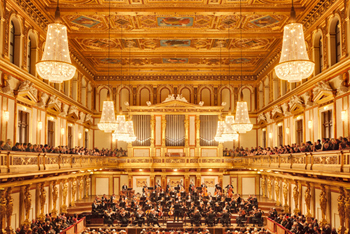 “As high as any expectations could be, they would still be exceeded by the first impression of the hall which displays an architectural beauty and a stylish splendour making it the only one of its kind.” This was the reaction of the press to the opening of the new Musikverein building and the first concert in the Großer Musikvereinssaal on 6 January 1870.
“As high as any expectations could be, they would still be exceeded by the first impression of the hall which displays an architectural beauty and a stylish splendour making it the only one of its kind.” This was the reaction of the press to the opening of the new Musikverein building and the first concert in the Großer Musikvereinssaal on 6 January 1870.
The impression must have been overwhelming – so overwhelming that Vienna’s leading critic, Eduard Hanslick, irritatingly brought up the question of whether this Großer Musikvereinssaal “was not too sparkling and magnificent for a concert hall”. “From all sides spring gold and colours.”
Brahms Hall
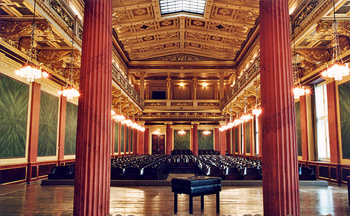 "In order not to promise too much it can be said that it has been made into the most beautiful, most magnificent, perfect example of a chamber concert hall that any of us knows in the world.” This was the reaction of a Vienna daily newspaper in October 1993 as the Brahms-Saal was presented to the public after extensive renovation work.
"In order not to promise too much it can be said that it has been made into the most beautiful, most magnificent, perfect example of a chamber concert hall that any of us knows in the world.” This was the reaction of a Vienna daily newspaper in October 1993 as the Brahms-Saal was presented to the public after extensive renovation work.
The surprise was perfect. It was a completely new hall. In contrast to the Grosse Musikvereinssaal, the Brahms-Saal had changed its appearance quite considerably over the years. When and how it acquired that slightly melancholy duskiness that was known to music lovers before 1993 cannot be precisely documented.
Glass Hall
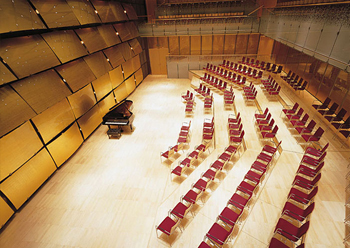 As a venue for events from concerts to luxury banquets, the Glass Hall / Magna Auditorium is not only the largest of the Musikverein's 4 new halls but also the most flexible in terms of usage.
As a venue for events from concerts to luxury banquets, the Glass Hall / Magna Auditorium is not only the largest of the Musikverein's 4 new halls but also the most flexible in terms of usage.
Hub podiums enable the smooth transformation of the concert hall into a conference centre, the cinema into a ballroom, or the stage into a catwalk. State-of-the-art equipment for sound, lighting, video and widescreen digital projection provide the ideal conditions for half-scenic productions.
The Glass Hall / Magna Auditorium was designed by the Viennese architect Wilhelm Holzbauer. With a height of 8 metres, the hall (including the gallery) can play host to up to 380 visitors.

 EN
EN DE
DE IT
IT FR
FR ES
ES RU
RU JP
JP RO
RO
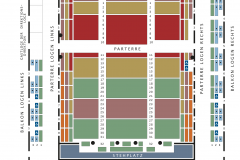 Seating plan
Seating plan 